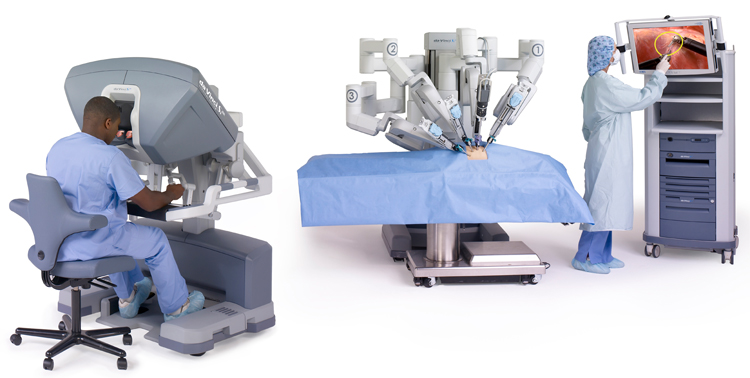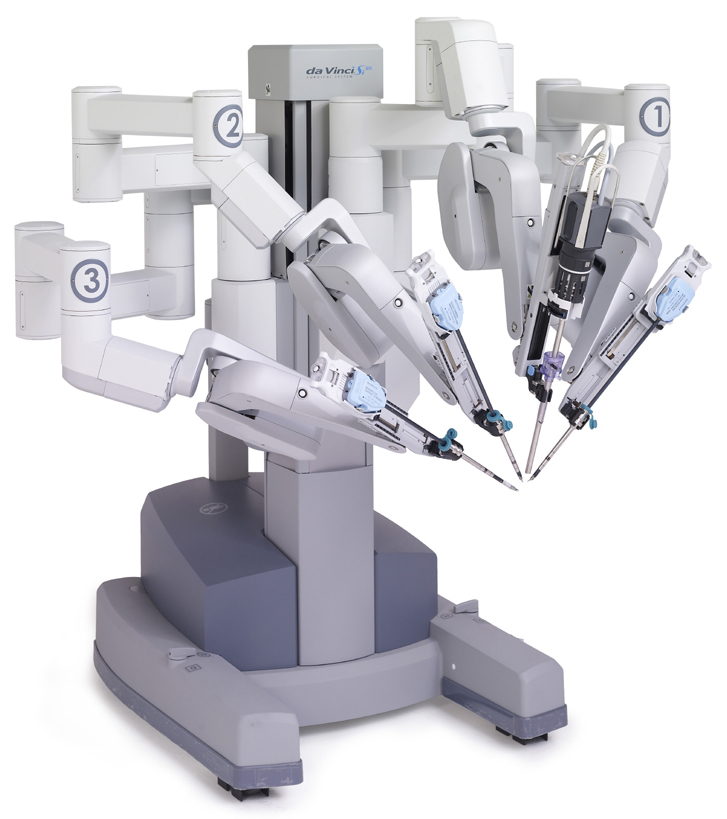Basic robotic surgeons have been around since the 1990s. In the first decade of the 21st century, they remained uncommon and relatively simple, though high-end companies began to develop their own more advanced models.*
Surgeries were divided between supervisory-controlled systems, telesurgical systems and shared-control systems. Supervisory-controlled systems were the most automated - requiring a human only to input directional data, and to supervise the operation to take control if anything went wrong. Shared-control systems were the least automated, in which human surgeons were physically present and did most of the work, but were aided by robots.
Though yet to become widespread, many large hospitals and universities had their own automated systems in place by 2010. Continued tests and trials of these machines greatly improved their accuracy and reliability. The growing number of successful surgeries made patients more willing to trust in robotic procedures.
By the mid-2010s, many cardiothoracic, gastrointestinal and orthopaedic surgeries could be handled almost entirely by remote-controlled robots. By 2018, the majority of large hospitals in the developed world use a robotic surgeon on at least a semi-regular basis. South Korea in particular is leading the way in this field, with almost every hospital in the nation using them routinely.* The latest models feature improved dexterity and multitasking, high quality incision tools and higher levels of automation. New ultra-small cameras are also in use, giving controllers an extreme close-up view of the operation.*

Previously, it could take a dozen surgeons, anaesthetists and nurses to perform surgeries, with even more for certain complex procedures. Now, robots can remove some or all of this burden, performing the jobs of several different specialists at once and working around the clock without tiring.* Surgeries in 2018 often consist of just one or two human supervisors overseeing a robot's work. In the long run, this helps to reduce health costs. Additionally, robots offer much higher precision than humans, so patients are able to leave the operating table with less collateral trauma.
Telesurgery is now being looked into as a way for doctors to conduct surgeries over long distances. This could allow a specialist surgeon in England to operate on a patient in Australia for example, using only remote-controlled robots. However, issues with latency will delay this practice from entering the mainstream for a while yet.
Despite being another profession threatened by automation, hospital surgery remains a primarily human undertaking for now. Robotic operations are still in their infancy, requiring the presence and supervision of doctors and other personnel. It will be a long time before human medics are made entirely redundant by this technology.

Wow so good very informative post. Orthopaedic
ReplyDelete